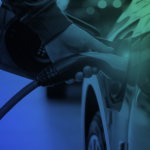The Rubber Behind and the Road Ahead
A year in review and what’s next at taq Automotive Intelligence.
Alan Bird, CEO, and John Currado, President
This past year was unlike any other. We saw unprecedented changes both internally at taq Automotive Intelligence and throughout the industry. The pandemic shifted not only how consumers purchase vehicles but how dealers and OEMs conduct business. From supply chain challenges and limited inventory to consumers staying online, trends that started in 2020 continued with ultimately positive results.
Using Automotive Intelligence
Trends in data are staying true to course. For example, over 60% of Canadians say they would use an online purchase option, with 92% of vehicle buyers conducting research online and two-thirds viewing the digital experience as a good alternative to a dealer visit. Customers are also more intentional in their purchasing, doing less shopping and less browsing.
With these new expectations, dealers have been shifting the way they work with the consumer. Moving from solely in-person to both virtual and physical showroom experiences is resulting in more appointments kept, more efficient negotiations, and higher close rates. In fact, close rates were higher in 2021 than ever before.
At taq Automotive Intelligence, we help bridge that gap from online to in-person, knowing what consumers want and how to fulfill their requirements. This trend hasn’t throttled back, and we’re here to help make sure dealers spend the appropriate amount of time with the right customers discussing the most suitable vehicles.
The data shows that many customers don’t mind waiting a bit longer to get the vehicle they want, instead of settling for one from inventory. As a result, OEMs can make what consumers are buying instead of selling what they make, which is ultimately more profitable. The ability to deliver at the right time, and not just in time, means lower dealer inventory costs and a corresponding price reduction for the consumer.
Another change, the internet, is now the modern auto mall. All the competition is next to each other in open browser tabs. Customers may use an auto show instead of the auto mall for a chance to sit in the driver’s seat. Yet, some OEMs are not participating in shows. Will that take them out of the buying selection or not? Using Automotive Intelligence, we’re learning more about selection criteria and how this may change the sales funnel.
Ultimately, all stakeholders are helping in the acquisition of a vehicle, resulting in happier OEMs, dealers, and consumers. We expect these trends will continue post-pandemic.
Aligning our brand
As part of the dynamic nature of the industry and the new path forward, 2021 marked our company rebrand. Automotive Intelligence is the value that differentiates us, and we’re driving it to market.
Separate from our leasing company, our technology company is working to integrate data throughout the entire industry. So beyond having a great team, we have the best knowledge and understanding of the industry.
Our entire team provides feedback to support our understanding of when someone is most likely to purchase to help our customers take effective action. By conveying consumer buying patterns to a dealer, their customer correspondence has increased value. And as the value of used vehicles appreciated for the first time, we’ve helped dealers identify vehicle equity on trade-ins and upgrades as a key to keeping clients and developing long-term relationships.
To support this strategy, in-depth training has been essential to understanding how the team is connected to the entire process. The business, the strategy, and the 360˚ perspective help us all solve problems more effectively. As a result, our team is excited and putting in a huge effort, making us even more successful.
What to expect in 2022
In 2022, we’re connecting even more dots on the customer journey to build better and more intelligent solutions. Our team considers all the angles: the introduction of electric vehicles, increased value in used cars and trade-ins, the shortage in supply of new vehicles, dealer groups buying used vehicle retailers, and the potential for subscriptions and car-sharing services. The traditional model is changing, and it’s not coming back. The speed of this business is only accelerating. At taq, we’re all gassed up, and we’re not slowing down.




